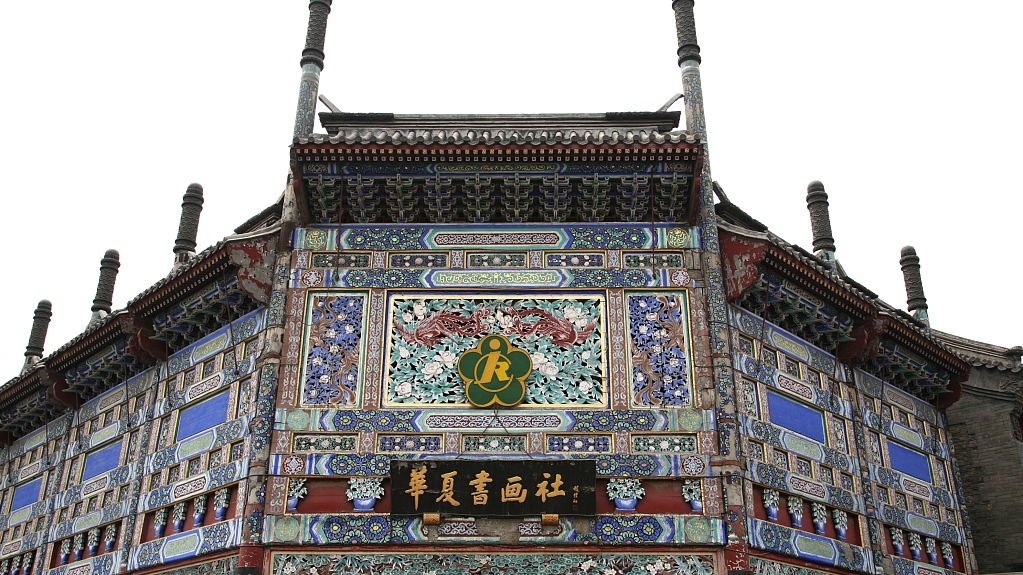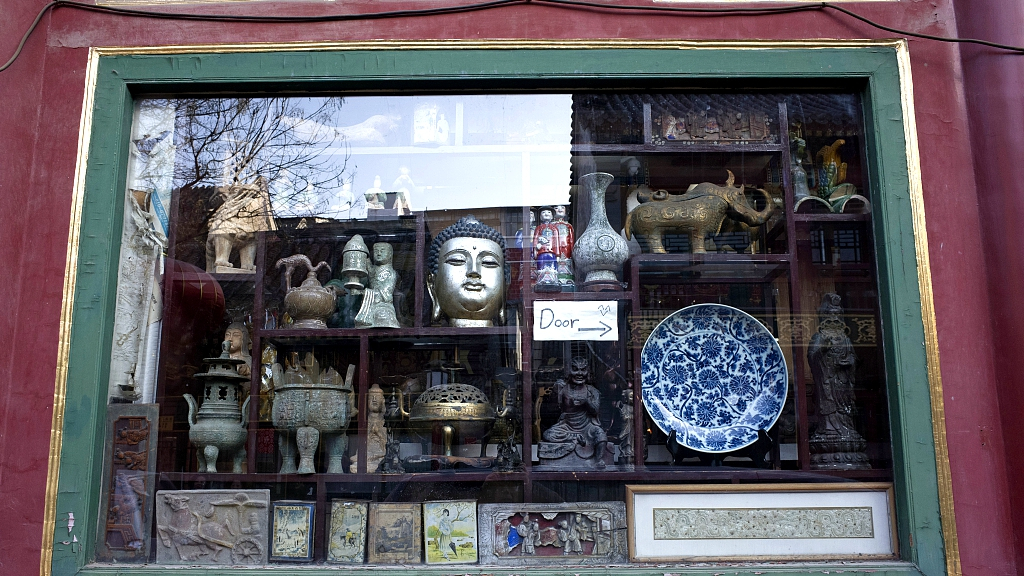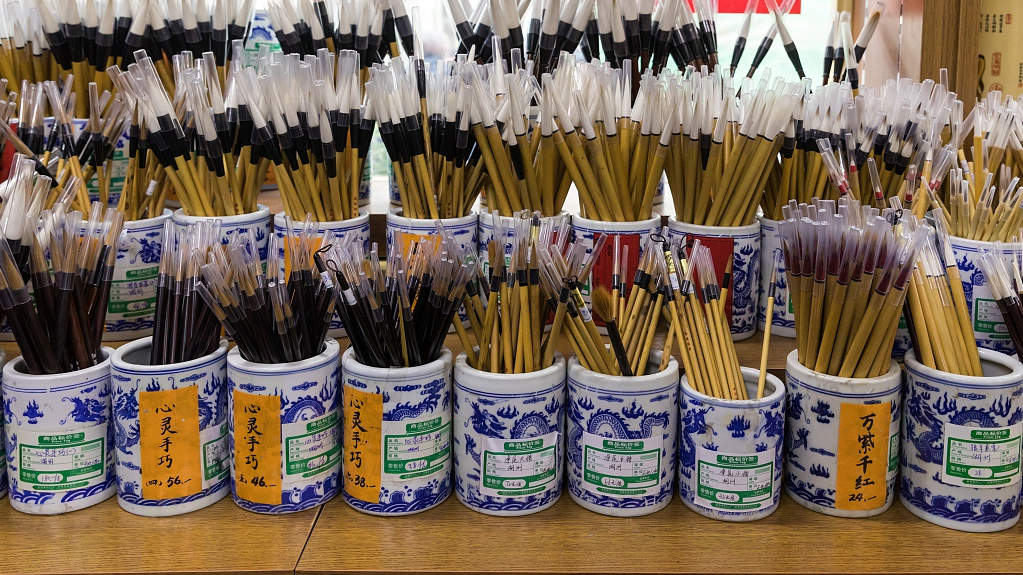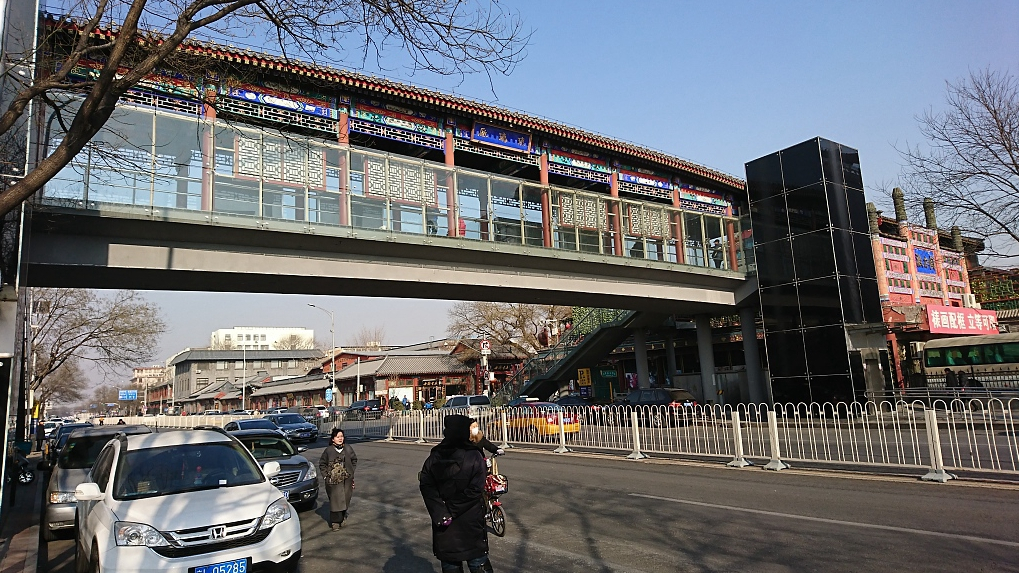

Liulichang cultural street is located in one of Beijing's traditional old quarters in Xicheng District. If you are interested in curios, calligraphy, traditional Chinese paintings or art history, Liulichang is a must-see on the travel list.
The name "Liulichang" literally means the colored glaze factory, which dates back to the Ming dynasty (1368–1644), when colored glaze factories for royal palaces, temples, and residences were settled here. After the construction of the outer city in 1539, it became an inner city area which was forbidden from burning kilns, but the name of Liulichang remained.

A corner of an antique store on Liulichang Street. /VCG Photo
In the Qing Dynasty (1644-1911), many literati gathered around this area for imperial examination; thus, the factory was gradually replaced by the market of calligraphy, copybook, and artifacts. Nowadays, Liulichang is worth delving into for its quaint, age-old village atmospheres. Visitors can also rummage through old Chinese books, paintings, brushes, ink and paper.

Chinese painting brushes are sold on Liulichang street. /VCG Photo
Rongbaozhai, representing the authentic ancient and modern calligraphy and traditional Chinese paintings, is the most famous store on the street. China Bookshop is another exciting spot where visitors can read block-printed editions and hand-copied books of ancient times.

Rongbaozhai building on Liulichang street. /VCG Photo
Other stores also sell unique items, such as stone ceramics, ancient Chinese instruments and the four treasures of the study, brush, ink, paper and ink slab.

A store on Liulichang street. /VCG Photo
In 2011, an overpass exhibition was constructed, showcasing the history and connecting the east and west part of this cultural street.

The overpass linking the east and west of Liulichang street. /VCG Photo
Although Liulichang is not the most famous scenic spot in Beijing, every corner of the street has its charm and cultural heritage that is worth exploring.
Transportation:
Visitors can take bus No. 14, 15 and 66 to Liulichang station, or take Metro Line 2 to Hepingmen Station and walk south for 5 minutes.

Copyright © 2018 CGTN. Beijing ICP prepared NO.16065310-3
Copyright © 2018 CGTN. Beijing ICP prepared NO.16065310-3